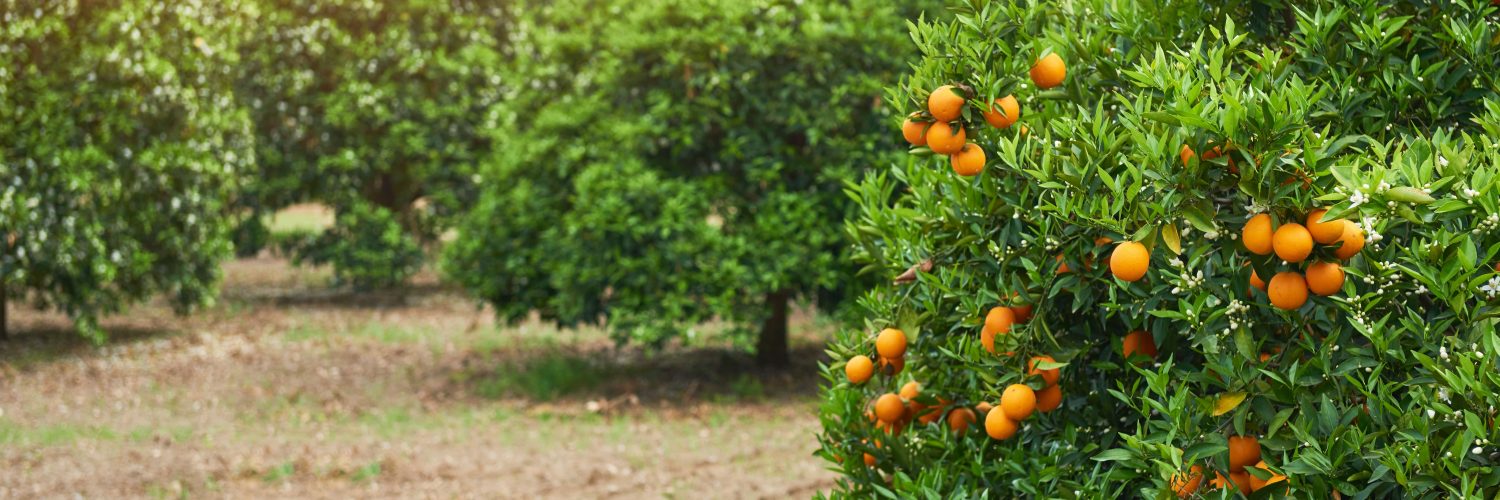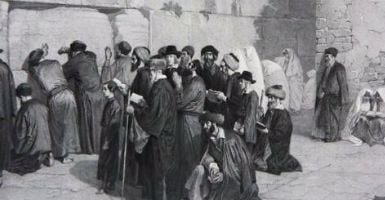When you besiege a city for many days to wage war against it to capture it, you shall not cut down its trees, to swing an axe against it, for you eat from it – you shall not cut it down – for is a tree of the field a man such that it shall go before you in the siege? (Devarim 20:19).
This essay will discuss a fascinating Halachic question that is tangentially related to Refua. The Pasuk above delineates the Isur of Bal Tashchis with regard to the destruction of fruit trees, and the Rambam extends the prohibition to any destructive or wasteful act (Sefer haMitzvos, Lavin 57).
The main Halachic debate surrounding this Isur concerns an act of destruction that is done for a constructive purpose – can that be permitted? As we shall see, there are a number of ramifications of this debate that are relevant to questions of Refua.
We will begin with two interesting sources in the Gemara:
Shabbos 129a:
R’ Chiya bar Avin said in the name of Shmuel: We may make a fire on Shabbos for one who undergoes bloodletting and then feels cold, even during Tamuz [due to the concern of Sakana].[1] [In fact] for Shmuel [who had undergone bloodletting], they chopped [firewood] from a chair made of expensive wood [as they did not have any inexpensive wood available]. For R’ Yehuda they chopped [firewood] from a table made of [expensive] cedar-wood. For Rabba they chopped [firewood] from a stool.
[In response to these episodes,] Rabba said to Abaye: “But surely they violated Bal Tashchis!”[2] He replied: “Bal Tashchis of the body is preferable to me.”[3]
This Gemara presents a novel concept – “Bal Tashchis of the body”. Evidently, if there is a choice between Bal Tashchis of an (inanimate) object and Bal Tashchis of the body, the body takes precedence.
To examine this concept more closely we will introduce the marvelous comments of the Yad David (R’ Yosef David Zintsheim zt”l[4]) on this Gemara, explaining the basis of the debate between Rabba and his Talmid, Abaye:
Abaye certainly understood that it would be necessary and justified to break apart a stool to protect a human body that was feeling cold after bloodletting. However, in this case Rabba did not yet feel cold but had asked, as a pre-emptive measure, that the stool be broken so that firewood would be on hand to make a fire if necessary. Abaye questioned this practice given that Shmuel’s dispensation to make a fire on Shabbos surely only applies when the patient is already in a state of Sakana. The possibility of that the patient might become cold following the bloodletting and thus being at risk of Sakanas Nefashos is surely too remote to justify Chilul Shabbos. If so, the same argument can be made with regard to Bal Tashchis. The possibility of Sakana is surely no justification for violating the prohibition.
Rabba responded that the two Issurim are not comparable. Even a remote possibility of Bal Tashchis of the body overrides definite Bal Tashchis of another item.
These are the enlightening thoughts of the Yad David. Perhaps we can further elaborate that Rabba and Abaye may have agreed that Bal Tashchis of the body overrides Bal Tashchis of another item. However, in Abaye’s view this is because the more severe Isur of destroying one’s body pushes aside the less severe prohibition to destroy property. In other words, the Isur of Bal Tashchis still applies to the property, and in a case where the Sakana is only remote he felt that the lesser Isur could not be overridden.
However, Rabba’s view is that when an item of property is destroyed so as to avoid damaging the body, it is not considered an act of destruction at all. It is, quite simply, not Bal Tashchis. This is true even if the danger is only remote; since the act of destruction is done for the positive benefit of saving the body, it does not constitute destruction.
Shabbos 140b
The Gemara cites Rav Chisda who rules that if a person is able to eat coarse, cheap bread made of barley it is Bal Tashchis for him to partake of expensive bread made of wheat! Similarly, Rav Papa says that if a person is able to drink beer (or other cheap alcoholic beverages) but chooses instead to drink wine, he transgresses the Issur of Bal Tashchis. Ultimately, the Gemara rejects their positions, because eating coarser bread or drinking cheaper beverages is worse for a person’s health and “Bal Tashchis of the body is worse (than Bal Tashchis of the food)”!
These rulings of Rav Chisda and Rav Papa are puzzling in the extreme. Why would it be Bal Tashchis to partake of more expensive food or beverages? A person surely has the right to purchase more expensive items and enjoy their superior quality and taste, even if there is no difference in their respective nutritional value. He is not throwing money away – he is purchasing items for their value. Does a person violate Bal Tashchis when purchasing a more expensive item that has no added nutritional benefit or when purchasing the same item in a more expensive store?![5]
In particular, a purchase does not appear destructive in any fashion, as the money spent is not destroyed but it is merely transferred to somebody else. It would certainly be permissible to give the seller money as a gift if one so desired. How then can this transaction constitute Bal Tashchis?
This and other similar considerations led haGaon Rav Asher Weiss Shlit”a to the following conclusion:
It would appear that [Chaza”l] only stated that this constitutes Bal Tashchis as a form of hyperbole. Their intent was only to teach Musar, namely, that it is not appropriate for a person to waste his money on physical pleasures that do not contribute to his health. This is why the Rambam does not cite this Halacha – for it does not constitute an outright Psak Halacha.
The Maharsha notes that unlike several other matters of guidance delineated by the Gemara (ibid.) that were addressed to a “Bar Bei Rav” (a Torah student), this warning about Bal Tashchis of the body is addressed to everyone. The Maharsha explains that this guidance is for everybody and is not merely “Eitza Tova” (good advice) directed primarily towards Bnei Torah.
The Maharsha implies that this is in fact a Psak Halacha and not just an “Eitza Tova”. According to Rav Asher, we must say that although it is indeed a Psak Halacha, it is not actually a violation of the Isur d’Oraisa of Bal Tashchis, but is predicated upon Musar ideals. In any event, we may certainly conclude that spending more money on healthier or more nutritional foods is not considered “wasteful”.
Having seen that in some cases, an act that could be seen as destructive done for a beneficial purpose is not considered “Hashchasa”, let us examine whether objectively destructive acts that are done for a constructive purpose are in fact permissible.
The remainder of this essay will follow Rav Asher’s discussion of this topic (Minchas Asher Devarim-Parshas Shoftim Siman 34). He first discusses destroying items that are causing harm, then moves on to destroying utensils or other usable items for a constructive purpose.
With regard to residential construction, there are several Poskim who permit destroying things that are currently occupying the space, including fruit trees.[6] However, it is not certain that doing so is permissible for other positive purposes. Rav Asher cites several sources that permit this type of action:
- The custom to break vessels at a time of Simcha (Brachos 31a, Tosfos ibid. Shulchan Aruch 560:2). The Mishna Berura explains (ibid. 9) that since this is done to remind ourselves of the Churban Beis haMikdash and teaches Musar, it is not Bal Tashchis.
- The Gemara in Shabbos (105b) states that a person may tear garments and break vessels in order to make his household fearful. Doing so does not constitute Bal Tashchis. Similarly, the Gemara in Kidushin relates (32a) that Rav Huna tore expensive material belonging to his son Rabba to test whether he would become enraged. The Gemara asks: “Surely he thereby violates Bal Tashchis!” It answers: “He did it in a manner of Pumbayni (meaning that it was possible to repair the tear).” [What is the difference between the ruling of the Gemara in Shabbos and in Kidushin? Why is it permissible to simply tear or break things to make one’s household fearful but not to educate one’s son? Rav Asher answered: “It seems clear that even if the act [of destruction] is done for a benefit, nevertheless, as far as it is possible to achieve the desired outcome with less destruction, one should certainly endeavor to do so. If it is possible to achieve the outcome without any destruction or loss and a person nevertheless acted destructively, he has violated Bal Tashchis.”]
- The Gemara in Ta’anis (20b) relates that R’ Huna was accustomed to purchasing the leftover produce from the farmers on Friday and throwing it into the river. He did so to encourage them to keep bringing their produce to the market on Friday to provide for the Shabbos meals of the townspeople, and not be concerned that it would go to waste.[7] Why did this not violate Bal Tashchis? Evidently destroying something for a positive purpose is permissible.
Based on these sources, Rav Asher justified the common practice of governmental agencies to destroy excess agricultural produce to prevent flooding the market and causing prices to plummet to the point that farming would become unprofitable. If there is no other way of achieving this, destroying the produce is permissible and does not constitute Bal Tashchis.
This question has relevance to a former Minhag of Lag baOmer, which raised a question in its time. Rabbi Shmuel Heller[8] relates (Kuntres Kevod Melachim):
I testify truly that in my youth I heard from elderly Sefardi Rabbanim whose fathers saw and related to them that the holy Rabbi Chaim ben Atar [the Or haChaim haKadosh] was once here in Tzefas at a Hilula and when he ascended to Meron… during the Hilula he was exceedingly joyous and he burnt several expensive garments in honor of Rashbi. The Sefardi elders here also knew and had heard this.
The Sho’el u’Meshiv questioned this practice, asserting that it is Bal Tashchis (Chamisha’a, Yosef Da’as 39). The Chikrei Lev also stated, “My heart tells me that this is not his (Rashbi’s) desire” (Tinyana 1, Y.D. 11).
However, Rav Heller was at pains to justify the Minhag. He, as well as the Sdei Chemed (4, Asifas Dinim, Ma’areches Eretz Yisrael 6) and the Ben Ish Chai (Shu”t Torah liShma, 400) opined that since it was performed for a Mitzva it was permissible. It is no different than lighting many candles in the Shul during the day as an honor for the Shul or in honor of Tzadikim. He also notes that according to the Rambam, the Isur of Bal Tashchis of anything other than fruit trees is not a d’Oraisa (this detail is beyond the scope of this essay).
Rav Asher maintained that this Minhag is similar to that of breaking a cup at a Chupa. As mentioned above, doing so is permissible because it is a cause of Musar among the guests. Perhaps the same could be said of burning a garment on Lag baOmer – since it is for the purpose of expressing distress over the death of a Tzadik it is permissible.[9]
[1] There is a medical necessity to warm a person who has chills after bloodletting.
[2] I.e., how was chopping up these expensive pieces of furniture permissible?
[3] In other words it is preferable to destroy a piece of furniture than to destroy the body by allowing it to get too cold after bloodletting.
[4] R’ Zintsheim (1745-1812) was the Chief Rabbi of France under the Israelite Central Consistory of France established by Napoleon Bonaparte in 1808.
[5] I.e., we can certainly not consider it Bal Tashchis if a person chooses not to undertake the Tircha to purchase the item elsewhere at a cheaper price.
[6] Chasam Sofer 2:202, explaining the Rosh in Bava Kama 8:15. See also the Taz, Y.D. 116:6, who establishes several conditions that must be met to permit this.
[7] The Gemara explains why he did not give the produce to the poor or to the animals instead of throwing it in the river.
[8] R’ Shmuel Heller (1803-1884) was the rabbi of the Ashkenazic Kehilla in Tzefas.
[9] Rav Asher suggests that since the death of Tzadikim is compared to the destruction of the Beis haMikdash (see Rosh Hashana 18b), just as we make a Zecher l’Churban, so too do we make a Zecher l’Tzadikim.















Add comment